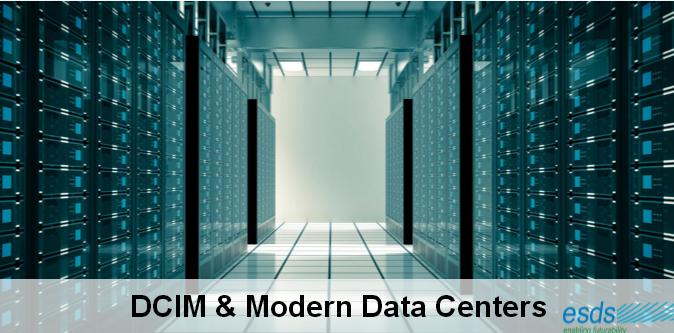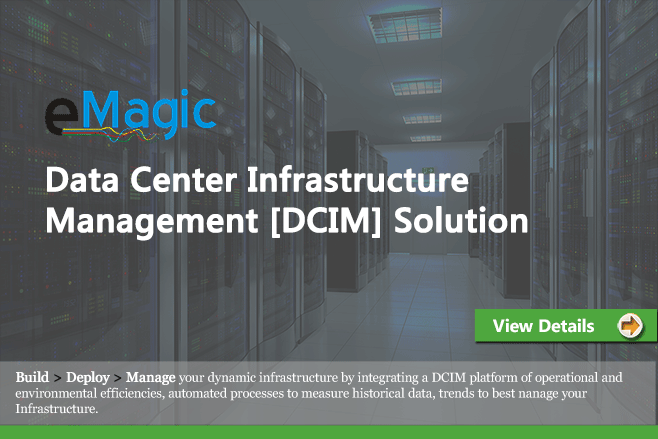The Purpose of DCIM in Modern Data Centers

Summary:
With an integrated approach, centralized data center management enables IT professional and managers of the facility to leverage a common platform for infrastructure monitoring, including power and cooling, for the planning and provision of data center capacity, to predict, diagnose and eliminate problems. But it is really useful to adopt a DCIM system like eMagic and how?
Challenges:
The major challenges for data center operators currently include the limitations of physical ability caused, in part, by the need to store, protect and process huge volumes of data. Adding more critical, there are the challenges brought about to ensure support infrastructure in response to users who access resources across a wide range of digital devices. There are the challenges that often result in complex technical problems, especially when you experience service interruptions. Today, more and more often these problems are caused by the aging of the technologies in the data center, both from operations and management processes that are fragmented.
Presentation:
Here, we will summarize the main points of focus to figure out why, how and when to implement DCIM solution. To address these 3 key points first we will have to identify at least some common issues in all traditional data centers:
1-Downtime and System failure:
Generally the IT staff and facility operators report incidents on the front of the power and cooling only when they in fact have caused an accident or trouble on ICT systems; the resulting downtime of services and applications generated a cascading series of business issues.
2-Inefficient capacity:
There are many data centers that experience capacity constraints (such as space, power, electrical load, cooling, etc…) And often IT managers are not able to understand and identify which devices or applications are responsible or at least generate some pressure on the ability of the data center. So far the approach has been too oversized, but this is an inefficient choice (at least from the perceptive costs.)
3-Cost Growth:
Energy consumption is one of the largest items of expenditure for IT, that mounting because of the excessive size of the capacity, but also where there is no system of recovery optimized for interventions in case of failures and emergency management.
4-Lack of Support to Business Strategy:
The failure of the systems, the capacity limits of the data center and rising operating costs prevent enterprises to achieve business goals, especially to enable new ICT services and applications or to respond nimbly to the needs of customer and market.
The purpose of the DCIM
In response to the challenges described above, companies can find a suitable DCIM (Data Center Infrastructure Management) via a conclusion. For example, the purpose of the eMagic DCIM can be summarized as follows:
-Data center environment:
Builds a unique view of the entire data center environment, i.e. On all infrastructure systems, including those of power and cooling and those for monitoring services, devices and sensors and the rack-level control.
-Assets and Inventory Management:
It improves assets and inventory management control through the entire physical space and data center footprints, including modular systems and equipped co-location, cabling, security, racks and blade chassis and their internal component tree. Overall, user can manage any type of inventory and assets he wants.
– IT management and business service:
Optimizes IT management and more effective service delivery to the business through a unified view and management of all systems (physical and virtual – see: Heterogeneous Hypervisor Management with eMagic) ICT infrastructure, including operating systems, application architectures, services, etc…
Conclusion:
So the purpose of DCIM is therefore clear. Here, we have analyzed and focused all main aspects that can help companies get a better picture to move towards DCIM. For information, eMagic emphasizes some important aspects such as the centralization of data, their availability and monitoring in real-time.
- Why is Microsoft Turning Its Focus on Linux? - March 29, 2016
- Migrating Enterprise Data to the Cloud – A Checklist - November 30, 2015
- Why is your private cloud beginning to fail? - October 20, 2015
